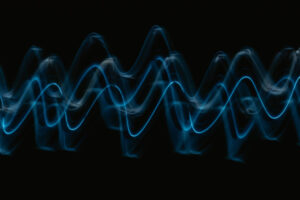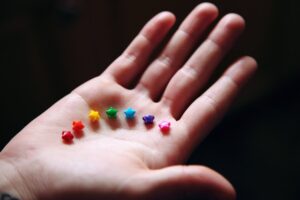Defining Misophonia
Since Pawel Jastreboff coined the term “misophonia” in 2001, clinicians have sought consensus on a definition for the disorder. In 2021, experts conducted a study and concluded that misophonia can be defined by a low tolerance for specific sounds and triggering auditory stimuli. Most commonly, triggering stimuli for people afflicted by misophonia are related to sounds originating from the mouth or nose, such as chewing, swallowing, throat clearing, breathing, or sniffing. However, these are not the only auditory stimuli that can serve as triggers for those with misophonia.
Non-bodily sounds like pen clicking, keyboard typing, and ticking clocks may trigger misophonic responses. Regardless of the origin, stimuli that trigger misophonia often elicit disproportionate feelings of anger and anxiety, and the body may even respond to a specific stimulus by producing sweat or increasing heart rate.
Diagnosing Misophonia
Misophonia is a relatively new topic of interest in academic and clinical fields, and as a part of the current misophonia examination, patients undergo an interview to determine their diagnosis. A proposed scale of six criteria determines the severity of a patient’s diagnosis.
-
Aversion to present or anticipated sounds
-
Feeling a loss of self-control that may result in aggressive behavior
-
Understanding that anger is disproportionate to the situation
-
Avoidance of potential misophonic occurrences or enduring sounds with great discomfort
-
Responses to misophonic situations that disrupt daily life
-
Other disorders cannot explain the negative feelings associated with triggering stimuli
Life with Misophonia
While some individuals may realize the severity of their response to triggering misophonic stimuli, others may not. Those who are aware of their reactions to these stimuli may attempt to temper their behavioral response by avoiding situations where the triggers may occur, trying to stop the stimuli, or mimicking the triggering actions. This can lead to a frustrating occupational and social life for those with misophonia and can be a source of mental distress.
The Misophonia Spectrum and the Amsterdam Misophonia Scale
Misophonia is a spectrum disorder and encompasses a range of responses to triggering stimuli. In 2013, Schröder, et al. created the Amsterdam Misophonia Scale (A-MISO-S), which the authors based on the Yale-Brown Obsessive Compulsive Scale. This self-report scale breaks down the misophonic spectrum into five categories of severity to specific misophonic stimuli:
-
(0-4) Subclinical
-
(5-9) Mild
-
(10-14) Moderate
-
(15-19) Severe
-
(20-24) Extreme
Misophonia Treatment Strategy
Due to the short history of clinical discussion around misophonia, the body of knowledge surrounding treatments for the condition is continually growing. Although mechanisms to cope with triggering stimuli can be useful to mitigate negative emotions associated with misophonic responses, recent clinical studies seek to establish proper treatments for those with misophonia.
As there is no current cure for those with misophonia, treatment for the condition is typically in the form of therapy. Occasionally, psychotherapy and medication are used together as treatment.
Cognitive-Behavioral Therapy (CBT)
To date, patients with misophonia who seek treatment benefit most consistently from cognitive-behavioral therapy. A 2020 study by Jager et al. saw the severity of approximately half of patients’ conditions decrease by a minimum of 30% on the Amsterdam Misophonia Scale. A follow-up with the patients one year after the study indicated CBT provides both short-term and long-term benefits for individuals diagnosed with misophonia.
CBT with Exposure Therapy and Tinnitus Retraining Therapy
Along with cognitive-behavioral therapy, various case studies also introduce exposure therapy into patients’ treatment plans. In these cases, the patient gradually experiences exposure to triggering stimuli. However, the addition of exposure therapy generally creates longer therapy sessions with a higher intensity.
In other case studies, treatment plans combine CBT with tinnitus retraining therapy techniques to reduce the magnitude of patients’ negative reactions to misophonic triggers. By allowing the patients certain degrees of control over their exposure to the triggers, they can see the effects of incremental change.
Misophonia and ASD
Misophonia can occur alongside other neurological conditions such as obsessive-compulsive disorders, attention deficit hyperactivity disorder, and autism spectrum disorder. For children with autism, hypersensitivity to sensory experiences may be compounded by symptoms of misophonia. Autism can cause sensitivities to loud or sudden sounds, but misophonic triggers are often soft or ambient sounds. This widens the range of auditory sensitivities that a child diagnosed with both autism and misophonia may experience.
Due to reduced tolerances of specific sounds, a child with autism may struggle even more in an environment where they may already experience difficulties, such as meal settings. As individuals with misophonia may avoid situations where they may encounter triggering stimuli, this can further impair social relationships of misophonic children also diagnosed with autism.
Misophonia Management
Along with CBT, a few other options can help children manage their misophonia. Many people with misophonia find headphones with music or white noise effective in mitigating misophonic responses. Others may find noise-canceling earplugs useful for alleviating responses to triggering stimuli.
Misophonia research is still in its infancy. Staying up to date with new developments on the subject can help diagnosed individuals and guardians of loved ones with misophonia continue to find effective management tools for the condition.
Sources Cited
Cavanna, A. & Seri, S. Misophonia: current perspectives.
Mattson, S., et al. A systematic review of treatments for misophonia.






